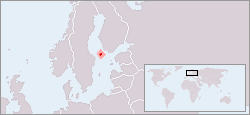Åland
Åland is an autonomous island-province in the Baltic Sea, consisting of a main island and a surrounding archipelago. While legally a part of Finland, in practice the islands run their own affairs and are rather different from the mainland. As the less than 30,000 inhabitants speak Swedish, the province's Finnish name Ahvenanmaa is rarely used.
- Not to be confused with Öland, a Swedish island in the southern Baltic Sea.
Municipalities
Åland is divided into 15 municipalities and one city, Mariehamn. Most municipalities consist of an island group and surrounding archipelago, though a couple are on the "main island" (which in fact consists of a few islands, separated by narrow sounds and connected by bridges).
- Mariehamn (Finnish: Maarianhamina), the capital
Reachable without ferry:
- Eckerö – ferry port in the west, with a giant post office house
- Finström
- Geta
- Hammarland
- Jomala
- Lemland
- Lumparland
- Saltvik
- Sund
Archipelago municipalities:
Other destinations
Understand
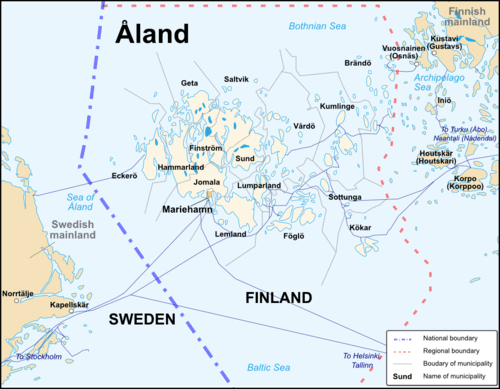
The Åland Islands (pronounced [ˈoːland]) are a group of small islands officially belonging to Finland but awarded a wide degree of autonomy by a League of Nations decision in 1921, which settled a long-running dispute between Sweden and Finland. Still at the time when Åland was under Russian sovereignty, a treaty was concluded between Russia, France and the United Kingdom at the issue of the Crimean War, by virtue of which the islands were demilitarized. Finland assumed the same obligation upon achieving independence. Among other things, Ålanders have their own parliament, issue their own stamps, are exempt from military service and maintain a special tax status in the European Union.
The archipelago consists of around 80 inhabited islands plus around 6,000 uninhabited islands, islets and rocks. The total population is only 28,000 (2010), 90% of which lives on the main island, known as Fasta (Mainland) Åland, which includes the capital Mariehamn. In local documents "the archipelago" does not include the main island.
Use care when planning activities or relying on community services. Outside Mariehamn the communities are tiny; what looks like a town on the map may be a village of only a few buildings at a cross roads!
In winter many guesthouses, cottage villages and sights (such as Pommern and Kastelholm) are closed. There is not much snow; opportunities for winter sports are limited.
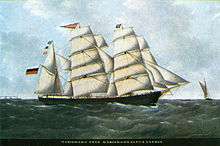
Since a long time seafaring has been important for Åland. In old times trade with the capital Stockholm dominated (and visiting ships on their way to Finland or Russia), but when regulations were eased, the Ålanders, who are quick to entrepreneurship, built bigger vessels – probably the densest ship ownership worldwide – and in the late 19th century they sailed out on the ocean with ships built with the accumulated wealth. "Captain's/shipowner's mansions" all over the islands remind of the epoch.
Around the turn of the century, when the rest of the world was converting to steam, many shipowners made bargains, buying good sailing ships for scrap prices. The last and most well-known, Gustaf Erikson, owned most ocean going sailing ships left in the 1930s. When the age of sail definitively was over, there were several shipowner companies, some of which still remain.
Talk
The islands are monolingually Swedish, a point of some contention in otherwise bilingual (or, in practice, frequently Finnish monolingual) Finland. This goes both ways: the Ålanders did not choose to be part of Finland and are often upset by the way their language is forgotten by mainland authorities.
Although Finnish is optionally taught in schools, many Ålanders choose not to study it and some may not want to speak it even if they know it. English is very widely spoken, even by many elderly people, and would be the primary choice if you can't speak Swedish or something closely related to it.
Signs are sometimes bilingual in Swedish and English or Swedish and Finnish, but English or even rudimentary Swedish usually make a better start than Finnish. If your Swedish and English are weak and Finnish seems a good choice, start with Swedish anyway and let the local make the choice about changing languages. Tourism is big, many of the tourists are Finnish and Ålanders know service in Finnish is a bonus, so many struggle to be able to offer it.
Get in
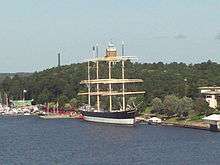
Åland is part of Finland, and thereby the Schengen Agreement. There are no border controls on the islands for most visitors. Ships and yachts arriving from outside Schengen can still take care of their border controls in Mariehamn (check procedures).
Note that the "tax reasons" for ferries going via Åland are due to Åland not belonging to the EU customs union. This means e.g. that wine (exceeding the allowed free import quantity) brought from France for private use elsewhere in Finland might require paperwork. Check details for any goods that may interest customs.
There are plenty of ferry connections between Åland and mainland Sweden and Finland. Primarily to allow duty-free shopping, ferries plying between Turku, Helsinki or Tallinn and Stockholm all stop off at Mariehamn or the jetty of Långnäs 30 km east, making this the easiest way to get in. The night ferries to and from Turku usually call at Långnäs, i.e. in the middle of nowhere, in the middle of the night (don't miss the bus!). In extreme weather or ice conditions sometimes also the ships that should call at Mariehamn call at Långnäs instead, or pass by, which happens a few times yearly.
There is a shorter and cheaper ferry from Grisslehamn in Norrtälje, Sweden, to Eckerö in the west and there are several smaller ferries from mainland Finland via the archipelago municipalities in the east (main routes: Kustavi via Brändö to Sund and Korpo via Kökar to Långnäs).
Mariehamn also has a small airport that serves flights to mainland Finland and Sweden.
By plane
- Mariehamn airport (MHQ IATA) – the only airport on the islands. There are daily flights from Helsinki and Turku and international flights to/from Stockholm. The flight from Helsinki is less than an hour and the flight from Turku and Stockholm is only half an hour. The flight to Stockholm crosses the time zone border and arrives before it departs, a fairly rare thing in Europe, as most flights within Europe (e.g., Brussels–London and Madrid–Lisbon) last over one hour. Mariehamn airport is situated less than 3 km north of Mariehamn.
- Kumlinge air strip - the archipelago municipality of Kumlinge have a small air strip which can be used by private planes airplane clubs.
Ferries from Sweden
The ferries going via Mariehamn or Långnäs may skip calling at Åland (or may call at Långnäs instead of Mariehamn) because of storm, ice or other special conditions. This happens only a few times a year, and passengers to Åland are taken care of, but check with the info desk if it seems you might be affected.
- From Grisslehamn (Norrtälje, Greater Stockholm) to Eckerö by Eckerölinjen , two to three times daily (5€ for an adult, 10€ for a car). It takes two hours from Grisslehamn to Eckerö. From there the line 1 bus (4.40€) connects to Mariehamn.
- By local bus: Take the 676 bus from Stockholm Eastern station (Tekniska Högskolan) to Norrtälje and change to line 637 to Grisslehamn. Tickets can be bought at SL Centres or at local kiosks, but NOT on board.
- By dedicated bus. Alternatively, Eckerö Linjen's buses to Grisslehamn depart from Stockholm (Cityterminalen) 2h 15min before ship´s departure, and from Uppsala (Hjalmar Brantingsgatan) 2h before ship's departure. The buses return to Stockholm/Uppsala at the ship's arrival. The Bus+Ferry Combined Ticket can be bought in Cityterminalen (Stockholm), from the bus driver or at the ferry terminal. Note however that the local buses are a lot cheaper and more efficient, and the dedicated buses should be avoided.
- From Kapellskär (Norrtälje, Greater Stockholm) to Mariehamn by Viking Line, three times daily.
- By local bus: Take the 676 bus from Stockholm Eastern station to Norrtälje and change to line 631 or 631X to Kapellskär. Tickets can be bought at SL Centres or at local kiosks, but NOT on board.
- By dedicated bus: Alternatively Viking Line's buses to Kapellskär departures from Stockholm (Cityterminalen) 1h 50min before ship´s departure, and from Uppsala (Hjalmar Brantinggatan) 1h 45min before ship's departure. The buses returns to Stockholm/Uppsala at the ship's arrival. The bus tickets must be bought in advance. Note however that the local buses are a lot cheaper, so travelers on a tight budget should avoid the dedicated buses. It takes two hours from Kapellskär to Mariehamn. This is by far the fastest route between Stockholm and Mariehamn, unless flying.
- From Kapellskär (Norrtälje, Greater Stockholm) to Långnäs by Finnlines, for people with a vehicle (e.g. car or bike) who want a more quiet passage.
- From Stockholm to Mariehamn or Långnäs, Silja and Viking, each with departures morning, afternoon and evening, the ships (mostly) continuing to Turku or Helsinki (check special offers, often much cheaper than regular tickets).
- by Silja Line (Tallink) (subway to Gärdet, walk to Värtahamnen).
- by Viking Line (get off local buses at Londonviadukten or take dedicated buses from Cityterminalen to the terminal at Tegelvikshamnen, Södern).
Ferries from mainland Finland
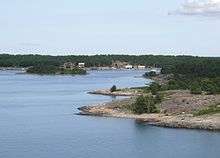
- From Turku to Mariehamn or Långnäs by Viking Line and Silja Line (local bus nr 1 to the harbour, first terminal Viking, last stop Silja; also some coaches and trains from Helsinki and Tampere go there), departures morning and evening.
- From Naantali to Långnäs by Finnlines, for people with a vehicle (e.g. car or bike).
- From Helsinki to Mariehamn by Viking Line and Silja Line (terminals near the market square, on each side of the bay), departures in the afternoon, in Mariehamn in the night.
- From Vuosnainen/Osnäs (Kustavi/Gustavs) to Åva (Brändö) by Ålandstrafiken ("Norra linjen")¹, connections by road to Torsholma (23 km) and ferry from Torsholma to Hummelvik (Vårdö), with cable ferry connection to the Åland mainland. Vuosnainen is 70 km from Turku, 1½h by car. Bus connection from Turku to Torsholma June to middle August, otherwise bus to Kustavi centre and taxi arrangements (check and book in advance) the rest of it.
- From Galtby (Korpo) to Kökar by Ålandstrafiken ("Södra linjen")¹, connections by same or other ferry via Sottunga and Föglö to Långnäs. Bus connection from Turku to Galtby (Skärgårdsbuss/TLO, 2h).
- From Houtskär (Näsby or Roslax) and Iniö (Norrby, Kannvik, ...)² via a host of minor islands to Torsholma (Brändö) a few times a week by Ferryway. Booking at latest the day before, M/S Karolina +358 40 717 3455 and M/S Satava +358 40-849-5140. The former takes pedestrians only, possibly also bikers. Bus from Turku to Näsby (Skärgårdsbuss/TLO, 3h). Kannvik is reachable by ferry from Kustavi (Heponiemi), at least in summer also from Houtskär.
1) Ålandstrafiken ferries are free to pedestrians but quite expensive for motorists, especially if not staying overnight in the archipelago, see Archipelago ferries below. There are parking lots at the harbours in each end, for those continuing by foot, bike or bus. For pedestrians bus lines 4 and 5 from Mariehamn go respectively to Hummelvik (€4.50) and Långnäs (€4.30), each of which is a terminal for a route to the Finnish mainland.
2) The public service ferries in the Archipelago Sea (e.g. Ferryway above) are probably free, at least for pedestrians.
Small craft
The passage from Sweden over the Sea of Åland is short enough for nearly any boat in nice weather (but check forecasts!). Coming from Finland, there is just a small gap in the archipelago (Skiftet). Having a boat will allow you to fully enjoy the archipelago.
Get around
By bike
A combination of ferry between the islands and a bicycle on the islands themselves is the most popular option (keep the receipt if paying for the ferry: valid all the season). There are well developed facilities for bicycles including dedicated cycle paths along many roads and a few ferries exclusively for bicycles and pedestrians.
By car
There is a good road network and the main island can be crossed by car in less than an hour between furthest points. Traffic is very light all over the island including in Mariehamn. Car rental should be arranged in Sweden or mainland Finland although it might be possible to rent a car at the airport. Fuel is widely available at organized points around the island and is similar in price to say mainland Sweden. The ferries to the archipelago are not free, check fees and arrangements.
By bus
There are bus connections to most parts of the main islands, served by Ålandstrafiken .
Archipelago ferries
The archipelago ferries are served by Ålandstrafiken .
The trip to Åland through the archipelago is something you will never forget. Choose a route through either the southern or northern archipelago.
Bookings can be made for trips to and from an "intermediate" port, but not from one "destination" port to another (mainland Åland to "mainland" Finland). Transit with motor vehicles have a much higher fee than travelling to some of the islands (e.g. motorcycle/car in season €70/140 vs €20+20/30+30). Spending a night on some of the smaller islands is probably worthwhile anyhow (you will need the receipt or a similar document to get the reduction).
There are parking lots at Hummelvik, Långnäs and Svinö, so you can leave your car unless you need it at the destination.
The Vårdö main islands can be reached from the mainland by free cable ferry, for other archipelago municipalities you need the archipelago ferries.
See
Note many major tourist spots are only open during late spring and summer and during closed times can only be viewed from the outside.
- 🌍 Kastelholm (Kastelholms slott). A castle located in the northern part is worth paying a visit. Partly a ruin today, it was founded in the 1380s. There are guided tours, also in English.
- Jan Karlsgarden Open Air Museum. Very close to Kastelholm castle, it has a number of traditional Åland buildings moved from other areas. Entry was free in 2008, although a fee was charged to visit the prison museum on the same site. Also has a tourist information center and a good restaurant and cafeteria.

- Bomarsund Fortress. Was built by the Russians during the years 1830-1854. The establishment was thoroughly ruined during the Crimean War when attacked by the allied English-Frenchmen. On the other side of the channel, next to the bridge of Prästö, is a small museum where pictures and objects from Bomarsund are on display.
- Postvägen. The Mail Route dates back to Queen Kristina´s days in the 17th century, when the Swedish postal service of that time was organized. Today the Mail Road looks different but it is still very much alive.
- 4-mb POMMERN and Maritime museum. In the West Harbour in Mariehamn serves as a memory of the great fleet of sailing ships that once had the town as their homeport. Her owner, Gustaf Erikson, had many similar ships on the Australian grain trade, the last ones, Passat and Pamir, rounding Cap Horn in 1949, long after the rest of the world had changed to steam and motor. A new dock is built and major repairs conducted 2017–2018, which means you cannot visit the ship itself, except in a limited fashion in the summer 2018. An exhibition about her, including a 20 min film about her voyage to Australia 1936–1937 is shown in the winter 2018.
- Maritime Quarter. A living marine centre with boat-building activity, a smithy and facilities for other traditional handicrafts, alongside a museum and a café.
Do
Åland is great for outdoor life; hiking, bathing, and enjoying the silent countryside. The right to access is not as liberal as in mainland Finland or Sweden, see http://www.visitaland.com/en/articles/allemansratten/ for details.
For fishing, you need a permit from the owner of the waters, available for many locations by paying a fee (the fishing law is different from that of mainland Finland). Many small businesses arrange fishing excursions or rent boat and equipment. They can probably handle the permits and show where to fish. Some fishing far from privately owned islands is free for Nordic residents.
Buy
The official currency is the euro (€). Swedish krona (SEK) is usually accepted in most shops and restaurants during the peak season, but the exchange rate is typically not very good, so it is significantly cheaper to pay in euros or by card. Compare rates with local banks first.
Shopping in Åland is expensive. Due to import of most goods, prices in most stores are in the EU highs, mostly 10–50 percent higher than in the Stockholm or Helsinki metropolitan areas. Prices on some groceries can be even higher, with oatmeal and gruel selling at more than double the price in, say, Stockholm or Helsinki.
As in other Nordic countries, international credit cards, at least VISA and Mastercard, are commonly accepted.
SALT in the maritime district of the east harbor of Mariehamn has a selection of local artisan crafts including textiles and glassware made in Åland, next to a maritime museum and local jewellery shop.
Åland has its own postal service and stamps unique to the island, these make excellent inexpensive souvenirs. There are post offices in several villages and in Mariehamn.
In general, souvenir shopping in Åland is difficult. The island is not well presented for international tourists and there are often only small displays of the typical souvenirs such as keychains, postcards and mugs. A few of the stores along Torggatan in downtown Mariehamn have these, as well as museums and some of the larger grocery stores. Some museums offer more special things, and local handicraft can be found at some locations.
Local beer, apple juice and apple liquors are tasty and available (Åland produces a third of Finland's apples).
Eat

- See also: Nordic cuisine
Some food items to look for:
- Smoked flounder with potato salad and fish dishes in general.
- Svartbröd, blackbread, as the name implies the bread is almost black. It is a round and quite flat rye bread. Its most characteristic feature is the taste. The blackbread is sweet. The sweetness originates from the treacle that is added to the dough and from the manner in which the bread is baked in the oven (baking blackbread is a time-consuming procedure). Stored cool the bread stays good for weeks, even months. It was originally used (in a less sweet version) on long fishing, hunting or seafaring expeditions.
- Cheese from the local ÅCA dairy is of high quality. The Kastelholm cheese is particularly recommended, and works well with blackbread. Its roots can be traced back to the 16th century.
- Ålands pancake, a traditional and delicious Ålands dessert. The pancake is made from rice or semolina porridge, flavoured with sugar, salt, cardamom powder and vanilla, and is served with stewed plums and whipped cream.
Most restaurants are in Mariehamn. Do not expect to find fast food outlets elsewhere on the islands. Some restaurants have limited hours of service and some are not open every day. Guest houses can usually arrange dinner, but you might have to book it beforehand.
Drink
While ships docking at Åland offer duty-free shopping, alcohol prices on Åland itself are on par with Sweden and Finland, and the tax free prices only somewhat cheaper.
Stallhagen beer made by Ålands Bryggeri AB and available in most bars and restaurants in the islands. The most common Stallhagen beer type is the traditional, light lager. But Stallhagen also comes in a wide range of other beer types with names like Dark Lager, Dunkles, Oktoberfest and Delicat. And there's no doubt where it comes from: the flag of Åland is on the label.
This brewery also has a good lunch 10:30–14:00, around €15–20 per person including beer. And, you can have more food if you weren't filled up with what they bring you.
- Tjudö Vineyard. Has three own home-distillers. They distil Scandinavian Vodka from the fruits at the vineyard. The apple vodka is called Ålvados, which is a kind of Calvados. They also make wine – Västergårds Äppelvin – with apples that have ripened on the farm's own trees. You can visit the vineyard, walk around among the fruit trees and see how the wine is produced. The guided tour ends in the old threshing house and here you can sample the drinks directly from the wine cellar.
Sleep
There are hotels in Mariehamn, but otherwise you will probably sleep at some kind of guest house, cottage or camping site. The host can often offer activities special for the site, such as fishing trips, deer watching and game dinner or guiding at the local sight.
The right to access is not necessarily regarded to include camping on Åland, due to the islands' small size and fragile nature.
Respect
Åland has its own parliament, its own executive government and is generally autonomous from Finland. The cultural heritage though is mostly Swedish.
Speaking Swedish and being a part of Finland, the people of Åland regard themselves as a separate and autonomous nation, and appreciate if you refer to them as one.
Stay safe
Crime is unusual and on shore there are few risks.
Usual warnings apply to the sea and possible sea ice.
A less obvious risk is the shore of islands close to the cruise ferry lanes: the currents caused by the ships passing are dangerous, with water quickly rising, and then withdrawing like before a tsunami (which will follow).
On the cruise ferries to and from Åland alcohol can cause problems, including drunk brawls and sexual harassment. Do not go alone with strangers to private areas unless you are sure you can trust them (and do report any serious incidents, immediately if you can, they will be taken care of).
